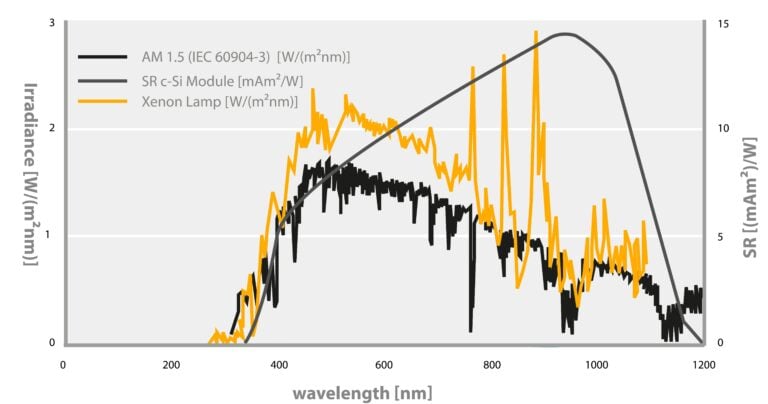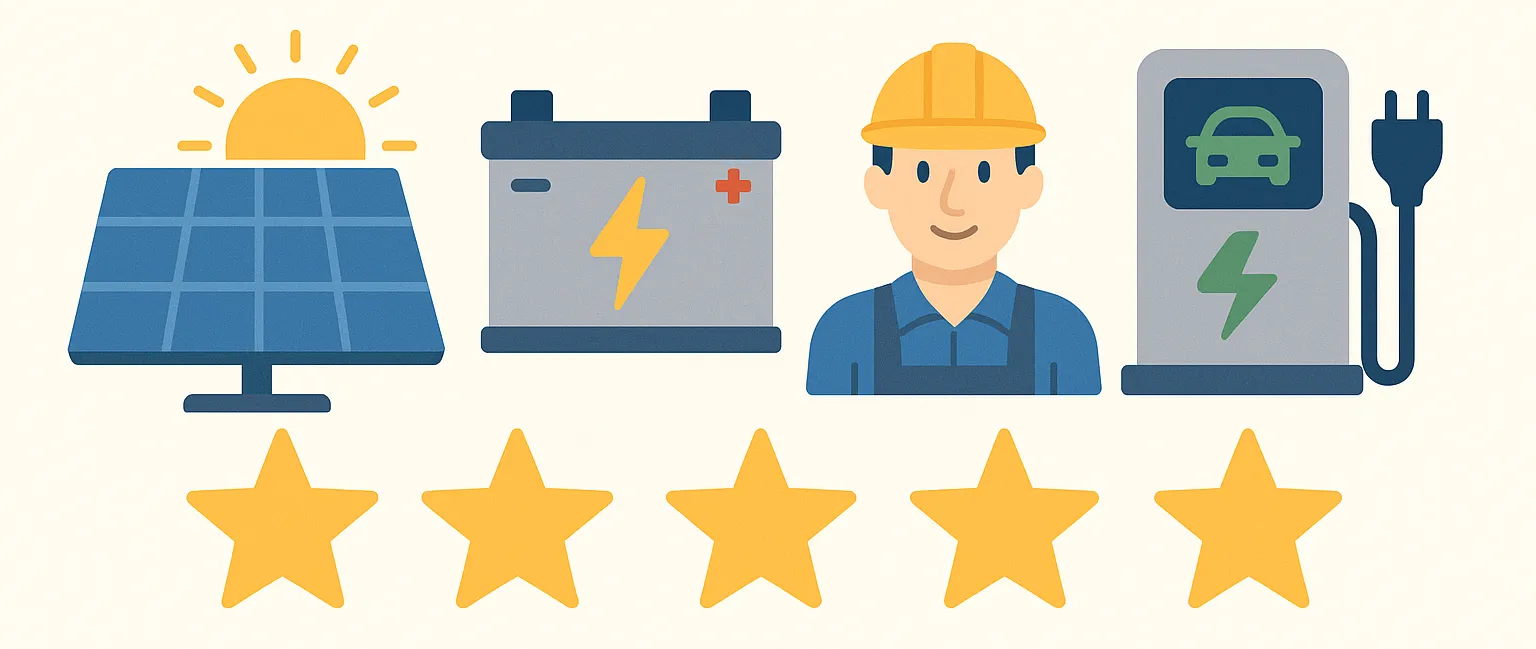It pays to know a little about standard test condition power measurements – the “other” STCs – to understand the quality of the panels you purchase, writes Michelle McCann.
The solar PV module market is about as competitive as it gets. Manufacturers eager for your business will push their latest improvements or designs, but they can’t tell fibs about the technical stuff – and that includes output. Power measurements used to determine the nameplate rating of a solar panel are determined under standard test conditions.
The solar cells that power a panel produce different amounts of power depending on three conditions. These are the temperature of the cell, the amount of light it’s getting and the type of light. Standard test condition (STC) criteria have been established so that apples are compared with apples. They are defined as: 25°C (the temperature of the cells); 1,000 W/m2 (the amount of light the cells are receiving), and; under a spectrum of AM 1.5G (the type of light the cells are receiving).
Let’s take a closer look at each of these in turn. Note that standard test conditions are not typically met in the outdoors for more than a moment at a time. Testing is therefore done in a controlled indoor environment using a sun simulator as a light source. The internationally accepted standard for measuring STC power output is IEC 60904-1.
Temperature – 25°C: The cells that power the module respond differently at different temperatures. Measurement should be done at 25°C ±2°C and a correction is made to values at 25°C. Since the cells are tucked away inside their encapsulation sandwich, consisting of encapsulant, glass and backsheet at a minimum, they are not accessible and we cannot measure their temperature directly. This is solved by a combination of science and time. The panels are put into a heat-soaking chamber for long enough that we can be confident the temperature measured on the glass on the outside is representative of the temperature of the cells on the inside.
A rapidly changing temperature is problematic because the STC measurement will correct for any deviation from 25°C. Panels cannot be pulled from a hot roof or from the outdoors on a cold morning and immediately measured.
Light received – 1000 W/m2: The light intensity is defined to be 1,000 W/m2. By way of example, this is about the level of light you’d get if you faced directly into the sun (eyes closed for safety) on midday of Christmas Day in Sydney.
Type of light – AM 1.5G spectrum: The spectrum of sunlight can influence the amount of power output from a panel. This is because different panels respond differently to different wavelengths of light. The AM 1.5G spectrum was chosen as a standard back in the 1970s as a sort of average measurement found in the United States.
HOW DO YOU MAKE A MEASUREMENT?
A good sun simulator will have an AAA or even A+A+A+ rating. The three ratings are a measurement of spectral match, homogeneity and temporal stability and are defined in IEC 60904-9.

Spectral match: Spectral match is the most difficult of the A-ratings to achieve. The standard defines six different wavelength ranges and the percentage of total irradiance allowed in each. The graph to the right shows the spectrum of sunlight compared with the spectral response of a typical module and the spectral output from a Xenon arc lamp. A sun simulator will usually use either a Xenon arc lamp or a special combination of LEDs to achieve the desired spectrum.
Homogeneity: Having good homogeneity ensures that the same amount of light is falling on all parts of the panel. A class-A sun simulator will have less than 2% variation in uniformity across the panel.
Temporal stability: Since a sun simulator provides a flash of light (a long exposure of light would cause the cells inside to heat up and change the measurement), the temporal stability refers to the ability of the flash to hold a steady output over time.
SOME ALTERNATIVES
There are some great and useful systems available for making current-voltage (IV) curves and getting a feel for the STC power measurement of a module. These are called IV-curve tracers and are typically a hand-held device that can be plugged into a solar panel in the sunshine to get a reading on power output. It’s almost impossible for a panel to be operating at STC in this case, so the machine will make corrections.
It’s not uncommon to be correcting for up to 400W/m2 (out of 1,000) and for 10°C. The machines do not usually make any corrections for the spectrum. We can assume it won’t be AM 1.5G. Of course, the further you are from STC, the greater the error in making these corrections. Nonetheless, these devices give a good feel for STC power output – they just have a large error margin.
SO… WATT?
STC power measurements done with a sun simulator tell you very precisely how a panel compares to its nameplate rating, but what can you do with this information? If the power output agrees with the nameplate rating, then happy days! It’s time to sit back with a cup of tea and watch your panels at work. If you are disappointed by the power output, you have some options:
- If you’re a homeowner with a low-performing rooftop system, first step would be to contact your retailer and ask them to conduct a maintenance check on the system. If your retailer is no longer in business, contact a CEC accredited installer.
- If the system is underperforming, contact the manufacturer and see if you are covered by the output performance warranty. If you get stuck at this step, contact the Clean Energy Council for further assistance.
- If you’re an installer, go back to your supplier and show them the data. You may well find they are as troubled as you. In any case, since panels are priced in $/Watt, you (and your customer) are generally paying for the watts on the nameplate, not the watts that are actually delivered. If you’ve been delivered fewer watts than your nameplate would suggest, it is definitely a time to share your troubles with your supplier.
If you are buying a large number of panels, you have a lot of negotiating power and you should be getting a discount on power that’s not delivered. It’s best to exercise your power before you sign a contract, and it would be typical to see some random testing of your batch included in a contract.
News item provided courtesy of Ecogeneration - www.ecogeneration.com.au
